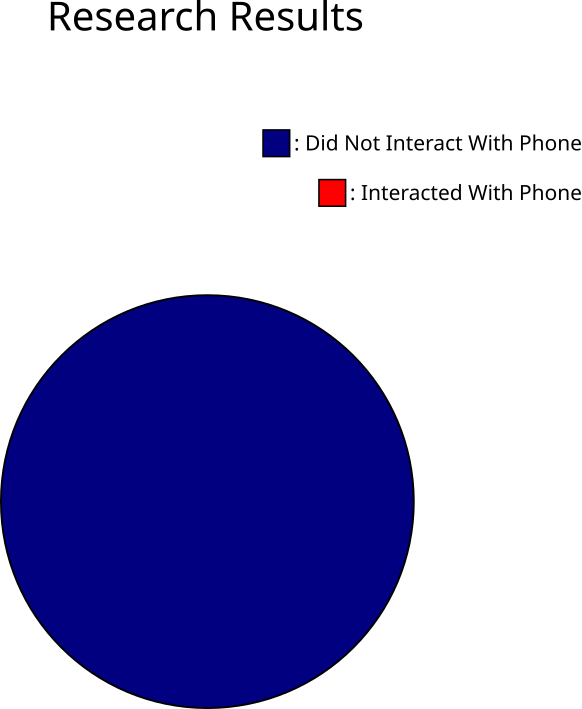The Amount Of Influence Sounds we Associate With Notifications Has on Our Behaviour
By Steve Wang
Introduction
Introduction:
People's addiction to their phones has become a societal danger. Many accidents could have been avoided if individuals paid attention to the task at hand, rather than looking at their phones while crossing roads or driving cars. While it is crucial to remind and teach individuals to look before they cross or focus when driving, the environment may also play a significant role in our actions. For instance, Ikea uses carefully planned hallways and arrows to guide shoppers, and research has shown that greenery reduces aggression (Cullen, 2021). This study aims to apply these concepts to our addiction to phones. The researcher hypothesizes that the audio environment, such as notification and vibration sounds, may encourage us to check our phones.
Research Method:
To test this theory, the researcher and assistants went to an alley with a few shops. They played the Notification Sound and alarm sounds when people were nearby and recorded their reactions. To ensure that the results were due to the association of the sound with phones and not a sudden spike in volume, both sounds were played at 70-80 decibels, the average street sound level. This experiment was conducted during 1-2 pm on separate days in the same location marked as “國泰世華銀行ATM(萊爾富超商-北市圓捷店)” on Google Maps, right next to the OK convenience store near the YuanShan MRT station.
Research Results
Out of the 52 people tested, none of them reached out to interact with their phones for both the phone ringing and alarm sounds. The results suggest that people are either desensitized to notification and alarm sounds, or these sounds are not enough to prompt phone usage.
Discussion:
One possible explanation for the results is that the sounds used may not be closely associated enough with phones. Future tests could use more commonly used notification or alarm sounds to observe whether people are more likely to pull out their phones. Another reason why people did not interact with their phones in the above tests could be due to the presence of the tripod and the person playing the sounds, which may have made the environment less normal. To ensure the results are entirely accurate, the researcher should have hidden somewhere and made the environment as normal as possible.
Conclusion:
In conclusion, noises associated with phones do not seem to be sufficient to encourage immediate phone usage. Further tests are necessary to validate these findings.
Regarding your question about the format, your writing is not in the typical academic paper format with headings, subheadings, and references, but that's okay since it seems to be a short report or summary of a research experiment.
Sources
- Pielot, M., Church, K., & de Oliveira, R. (2014). An in-situ study of mobile phone notifications. Proceedings of the 16th International Conference on Human-Computer Interaction with Mobile Devices & Services, 233–242. https://doi.org/10.1145/2628363.2628364
- Cullen, K. (2021, September 23). Can Green Spaces Reduce Violence? | Psychology Today. Psychology Today. https://www.psychologytoday.com/intl/blog/the-truth-about-exercise-addiction/202109/can-green-spaces-reduce-violence
